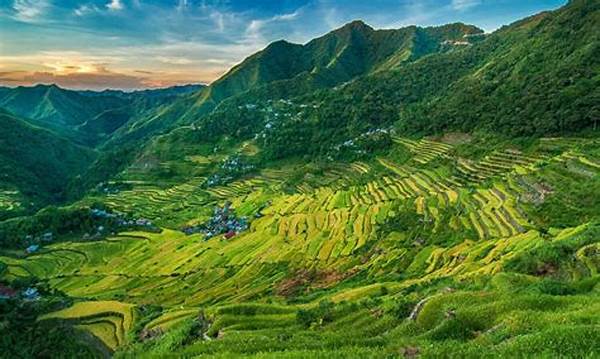Imagine the thrill of standing atop a mountain, breathing in the crisp air while enjoying the breathtaking scenery. Now, envision the same trail post-earthquake – a path potentially altered beyond recognition, where each step might bring the unexpected. This reality isn’t a deterrent but a call for preparedness and awareness. Understanding trekking trail conditions after an earthquake could redefine not just your trekking adventures but also ensure your safety in the wilderness. It’s not just about exploring the unbeaten path; it’s about conquering nature with informed confidence.
Read More : Affordable Camping Grounds At Natural Tourist Attractions In Malang
In the aftermath of an earthquake, the conditions of trekking trails can transform dramatically. Whether you’re an avid trekker planning your next expedition or a curious traveler fascinated by stories of resilience and rejuvenation, understanding these conditions can make a world of difference. With shifting terrains, unpredictable weather patterns, and occasional animal disturbances, these trails become a testament to nature’s raw power and an adventurer’s spirit. Let’s dig into this compelling narrative and discover what makes trekking trails post-earthquake an unparalleled experience.
Understanding Post-Earthquake Trail Conditions
The Immediate Impact on Terrain
After an earthquake, trekking trails transform into nature’s canvas, redrawn with every seismic shift. Initially, trekkers might find debris blocking paths or ground instability that can challenge even the most seasoned adventurers. According to a study by the Geological Society, approximately 30% of mountain trails experience some form of alteration post-quake, ranging from minor disruptions to complete obstructions.
The once-familiar paths can turn into a maze of uncertainty. Imagine the humor in recounting a tale where the “shortcut to paradise” now forks into three equally adventurous paths, each with its quirky challenges and picturesque surprises. Yet, this unpredictability is precisely what beckons thrill-seekers, turning the ordinary into an extraordinary journey.
Alterations in Flora and Fauna
Earthquakes not only reshape the land but also influence the ecological tapestry interwoven with the trails. Post-earthquake conditions may lead to new flora sprouting in places untouched earlier, creating vivid landscapes for trekkers to explore. This ecological shift often results in encounters with animal species either driven to new territories or reemerging after disturbances.
Tales from trekkers often include surprise sightings—a family of deer reclaiming their territory or rare plant species flourishing in hastily altered terrain. These unforeseen encounters add layers of depth to trekking stories, making each expedition exclusive and memorable.
Safety Recommendations for Post-Quake Trekking
With the thrill of unpredictability comes a responsibility: to prioritize safety. Knowledge about the specific trekking trail conditions after an earthquake is vital. Experts advise potential trekkers to:
Local Community Involvement
Local communities living near trekking trails play a crucial role post-disaster. Their invaluable knowledge about the land, flora, fauna, and trail conditions becomes a vital resource for trekkers. A heartening story is that of communities uniting to clear debris, restore paths, and create innovative signposts guiding travelers through altered trails.
Read More : Scenic Caves Among Natural Tourist Attractions In Jogja Admired Globally
Supporting these communities by choosing their services not only boosts local economies but also enriches the trekking experience. Their stories and insights offer a perspective on resilience and adaptability—key traits for any successful trekker.
Details on Trekking Trail Challenges
Navigating the New Landscape
Ensuring your Trekking Safety
Points to Consider on Post-Quake Trails
Summary of Trekking Trail Conditions
Trekking on trails reshaped by an earthquake is an experience rooted in both caution and awe. These conditions, while challenging, offer a unique narrative that intertwines the power of nature and human resilience. From adapting to altered terrains to immersing oneself in revived ecosystems, every trek becomes a story of adaptability and respect for nature’s uncontrollable forces.
Local communities and knowledgeable guides emerge as instrumental allies, ensuring that your trekking experience is not only safe but enriched with local lore and expertise. Adhering to updated safety procedures ensures that each journey remains a celebration of adventure rather than a cautionary tale of overlooking nature’s cues.
Conquering trekking trails post-earthquake doesn’t merely rely on one’s physical prowess but the ability to anticipate, adapt, and appreciate the new reality these conditions unfold. So gear up, chart your path with wisdom, and engage with the spirit of adventure harmoniously woven into the earth’s evolving tapestry. Let every quake-reformed trail become an epic story waiting for your footprints.


